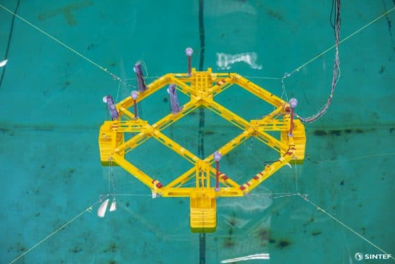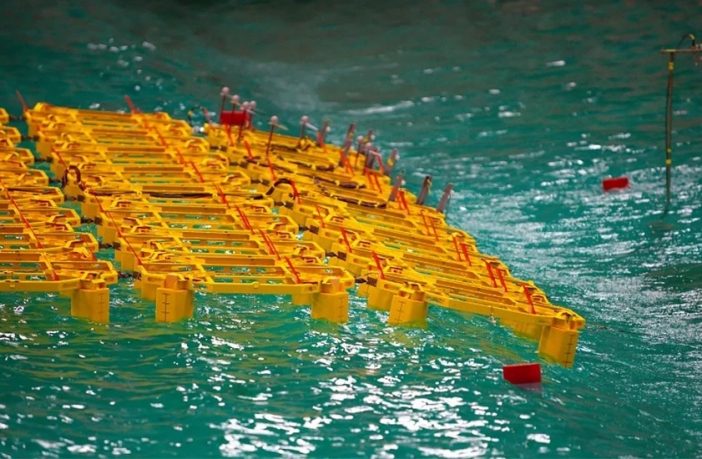- Norwegian independent research organization Sintef has been tasked by Norwegian energy giant Equinor, and Vollsveien-based engineering specialist Moss Maritime – a unit of Italian gas contractor Saipem – with testing a model of a prototype of an offshore floating solar plant that Equinor and Saipem want to bring to offshore waters.
The test was conducted on a floating structure with 64 modules on a 1:13 scale, in an artificial ocean basin in which waves, wind, and currents can be simulated in real-time. The model of the floating array was equipped with sensors that collected wave information, movement and loads in the mooring and connection points. Moss Maritime is using these data to calibrate its numerical model, which will later be used to design and optimize the real installation.
The first test, Sintex experts stated, showed the floating system design for offshore location is able to withstand the simulated, difficult environmental conditions of the Norwegian Sea, where the model should be applied for a pilot project under development by Equinor off the island of Froya, near Trondheim.

The purple sensors measure the array’s movements. Image credit: Sintef
“Today’s concepts are mostly designed for lakes and hydropower reservoirs and many of them would fall short if they were exposed to waves,” said Øyvind Hellan, vice president for research, ships and ocean structures at Sintef. “Our goal is to expand the pilot plant to become a full-scale research and development facility.”
Equinor intends to measure the plant’s power production to assess how harsh weather conditions and rough waters affect its performance. “If we succeed here, we can succeed anywhere,” said, in January, Hanne Wigum, the head of Equinor’s solar and wind tech unit.
Author: Emiliano Bellini
This article was originally published in pv magazine and is republished with permission.











